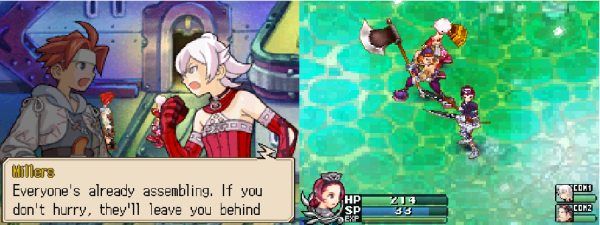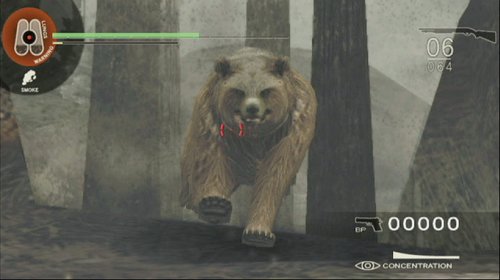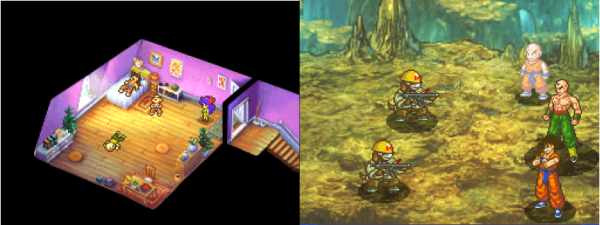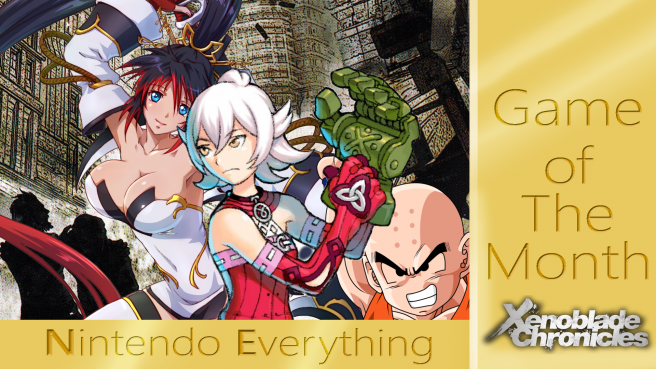Monolith Soft: From A to Xeno (Part 2)
As June draws to a close, I’m back with a second look back at the history of Monolith Soft and the games they created over the last generation of Nintendo consoles – with the exception of the actual Game of the Month. This was a period of change for the company and saw the release of several more experimental titles. Bandai Namco sold the majority of their stock in Monolith Soft to Nintendo in 2007 and while they wouldn’t become a first-party developer until later, all games from this point on would be on Nintendo consoles. Despite this, Monolith would still keep close ties with their previous owner, who took on publishing duties for some of their more niche games. Following the release of Baten Kaitos Origins there was a gap of two years before Monolith Soft’s next title – Soma Bringer.
Soma Bringer – Nintendo DS, 2008
Monolith’s first Nintendo DS title saw the return of both Tetsuya Takahashi as a producer and designer and Soraya Saga helping to craft the game’s story. It also saw the directorial debut of Shingo Kawabata, who would go on to work as a producer on Xenoblade Chronicles. Despite Takahashi and Saga’s involvement, Soma Bringer’s plot is quite different to their work on the “Xeno” games, being a simple little story featuring some well-worn RPG tropes. It’s clear that the appeal of this title is in the gameplay.
While some of Monolith’s previous RPGs had battle systems that drew some inspiration from action games, Soma Bringer is a full on Action RPG. Your party moves through dungeons in an overhead view, taking down enemies in real-time with an array of swords, guns and polearms. Though it’s a fair bit slower and less challenging than say, the Ys titles, the fact that items and skills can be mapped to the face buttons keeps the game moving at a nice pace without the need to constantly dip into menus. There’s also a lot of variety in how you approach combat, too, since there are eight characters to play as, each with a range of different classes and weapons to pick from.

Though the plot might be pretty typical JRPG fare, the system of progression with skill trees and heaps of loot reminded me more of western RPGs like Diablo. This more involved combat that puts players in control of a single character assisted by two AI teammates could be seen as a precursor to Xenoblade’s battle system. Soma Bringer also introduces the “Break” and “S-Break” status effects, which would also be evolved in Xenoblade’s combat, allowing players to topple enemies by exploiting openings. Given that it was released around the same time everyone was chasing that Monster Hunter money, Soma Bringer also has a multiplayer mode, but playing solo is fine since the AI isn’t too shabby. Everyone is certainly less suicidal than the computer-controlled characters in Xenoblade.
The presentation of Soma Bringer is also a strong point. Like other Monolith Soft titles, the game featured music by Yasunori Mitsuda of Xenogears and Chrono Trigger fame, which is always a bonus. The 3D character models used are quite detailed for the Nintendo DS, though the console’s tiny resolution does have the unfortunate side-effect of turning them into a mess of pixels any time the camera zooms out from the action. Soma Bringer was published by Nintendo in Japan, but never ended up being localised. Given that it was a risky new IP in a relatively niche genre that already didn’t sell well in Japan, the decision to never release it in English does make some amount of sense. But seriously, we got Glory of Heracles over this? Thankfully there’s an English fan translation available now, although Soma Bringer is already pretty import-friendly thanks to the linear progression and simple gameplay.
Super Robot Taisen OG Saga: Endless Frontier series – Nintendo DS, 2008-2010
Since the gameplay systems in Namco X Capcom were so close to the Super Robot Wars series, it made sense that director Soichiro Morizumi would be brought on to work on Banpresto’s mecha franchise, especially since Namco now owned it. Strangely, the end result actually has less in common with Super Robot Wars —sorry, Super Robot Taisen— than Namco X Capcom, ditching the strategy segments altogether in favour of a more traditional turn based RPG in the vein of Final Fantasy or Dragon Quest. There’s also surprisingly few robots for a Super Robot Wars game; there aren’t any licensed anime series here and even the mechs from the Original Generation games are a great deal smaller than they used to be. That said, there are a few familiar elements like “spirit” commands that grant various buffs and an excellent soundtrack by series veterans like Naofumi Tsuruyama and Takuya Hanaoka.

The game follows bounty hunter Hakan Browning and his harem of female fighters as they explore an endless frontier filled with “crossgates” to other worlds. All this dimension hopping provides some nice justification for why a handful of characters from other series show up, with Namco X Capcom’s Reiji and Xiamu and good old KOS-MOS returning as playable characters. Though Endless Frontier does use turn-based battles, there are still traces of Namco X Capcom’s combat in there. Upon initiating attacks, characters have to keep enemies juggled with all the techniques at their disposal, but there’s a little more complexity this time with features like switching to other characters for follow-up attacks. Surprisingly, Endless Frontier was released in the US by Atlus with a seemingly small print run. It’s now one of the priciest DS titles out there! Unfortunately we never got an English version of the sequel, Endless Frontier EXCEED, where the title presumably referred to the excessive cleavage of the female characters.
Also, Hakan has a ship called the “Zeit Krokodil”, which is German for TIME CROCODILE. I just wanted to throw that in somewhere.
Disaster: Day of Crisis – Wii, 2008
This Wii title stands out as the weirdest game Monolith has made, and the only one that isn’t really an RPG. It’s hard to even classify Disaster as belonging to a specific genre, since it switches up its gameplay style with every rescue attempt and action setpiece. Unlike the fusion of science-fiction and high fantasy that characterised Monolith’s other work, Disaster takes its inspiration directly from Hollywood action films. As the title suggests, the game plays out like a series of disaster movies taking place in rapid succession, although the onslaught of tsunamis and earthquakes seems a little quaint now we live in a world ravaged by sharknados and birdemics. As former International Rescue Team member Raymond Bryce, players have to deal with a constant barrage of natural disasters, rescue civilians and take down terrorists. All in a day’s work.

Disaster was intended to be a launch title, but didn’t make it out for almost two years after the Wii’s debut. Apparently it took longer to develop due to Monolith’s inexperience at creating action games and boy does that inexperience show. Disaster is really janky, with a dodgy camera, ugly visuals and more tacked-on motion controls than you can shake a Wii remote at. The game could almost be called a collection of minigames, but none of these varied segments work particularly well, regardless of whether Ray is steering cars, running from floodwaters or hosing down survivors. The most competent gameplay element is when Disaster turns into a light gun shooter in the vein of Time Crisis; Ray can switch between different weapons to take down armies of brain-dead terrorists (and bears), which is fun, but not particularly deep. But despite the obvious flaws, the game has a certain charm that prevents it from being a complete disaster. The unintentionally hilarious cutscene direction, the imaginative setpieces and weird touches like the comically oversized food that Ray chows down on give it the feel of a bizarre B-movie. It’s not quite the blockbuster that it set out to capture, but it’s worth checking out. Unfortunately, despite being something of a misguided attempt to appeal to western design sensibilities, Disaster was never actually released in the US. Being a massive flop probably didn’t help matters and it’s not surprising that Monolith Soft stuck to RPGs after this game. Still, Disaster: Day of Crisis is certainly unique and given that its writer and director, Keiichi Ono, has since left Monolith Soft, it’s a style of game that probably won’t be revisited any time soon.
Dragon Ball Z: Attack of the Saiyans – Nintendo DS, 2009
After somehow making a Super Robot Wars title without any anime licenses, Monolith Soft finally dipped its toes into the murky water of licensed games with this surprisingly decent take on a long-running series. Some might dismiss the idea of a Dragon Ball RPG, but hey, Chrono Trigger was pretty darn good. It turns out that a show all about increasing power levels over long periods of time actually translates pretty well into this format. Though the game only covers Dragon Ball Z’s Saiyan Saga, it contains a bunch of characters as playable party members, including some of the unsung heroes who never get any respect. If you were one of four people after a Dragon Ball RPG with Krillin in a starring role, you finally got your wish – for a few hours at least.

Attack of the Saiyans looks like it runs on a similar engine to Endless Frontier, but the battle system has been tweaked to be less about juggling enemies and more about teaming up for combos and blocking attacks with timed button presses. It’s a fun, fast paced system that’s unfortunately marred by the high random encounter rate. But hey, the environments all look really nice and are a massive improvement over Endless Frontier, even if you’re thrown into a battle after exploring them for a few seconds. I don’t know how Attack of the Saiyans ranks among the other fifty Dragon Ball games out there, but it’s a solid RPG. It doesn’t really have a lot to offer those who aren’t fans of the property (like me), but it seems like Monolith did their research at least. It’s a shame that the sequel teased at the end of the game still hasn’t seen the light of day.
And that brings us to Xenoblade Chronicles, arguably their strongest title and one that benefited from a decade of development experience. Yeah, it’s still a bit janky (that jumping animation…) but when you look at the massive 3D worlds, team-based combat that mixes action and strategy and largely coherent plot it’s clear the Monolith Soft have come a long way since their beginnings.
